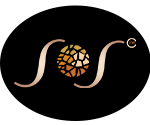PRP Therapy for Hair Loss: A Safe and Effective Treatment Option
Hereditary hair loss is very prevalent. Many men and women seek medical assistance when they experience unexpected balding or thinning hair. By administering medication or carrying out a hair transplant treatment, doctors have historically been able to stop or reverse hair loss. A more recent technique for the treatment of various kinds of alopecia is platelet-rich plasma (PRP).
Platelet-rich plasma, is a substance that is extracted from the blood and has long been used to treat musculoskeletal and, more recently, skin conditions. PRP injections or use following microneedling can help to improve skin texture and appearance. One of dermatology’s toughest issues, hair loss, may now be treated with PRP, which has recently attracted attention.

PRP Treatment
PRP is an abbreviation for “platelet-rich plasma.” Platelet-rich plasma therapy employs the best rich plasma your blood has to give, since it promotes faster healing, encourages growth factors, and increases levels of collagen and stem cells—both of which are naturally created in the body to keep you looking youthful and fresh. These growth factors are used in this circumstance in order to regrow thinning hair.
How Is the Procedure Performed?
To administer the therapy, your blood is extracted, most commonly from your arm.
The blood is then centrifuged to separate it into three layers: platelet-rich plasma, platelet-poor plasma, and red blood cells. The PRP will be used, and the remainder will be discarded.
Following a local anaesthetic, the PRP or “blood injection” is administered into your scalp with a syringe.
How Exactly Does Platelet-Rich Plasma Treatment Work?
The plasma is injected into areas of the scalp afflicted by hair loss by the physician — typically 15 to 20 injections per PRP session. People only feel a slight tightness and discomfort, and it’s done in about 30 minutes. Because PRP does not produce instant effects, you should not expect to see a full head of hair overnight. Three monthly sessions are most likely required, followed by an appointment four to six months later. The precise timing of your treatment plan will be determined by a number of factors, including the extent of your hair loss, as well as your age, hormones, and genetic composition.
PRP therapy has the following side effects:
As a minimally invasive procedure, PRP therapy may cause several pricks, brief pain, and pinpoint bleeding. To relieve the pain, your doctor may apply local anaesthetic.
The injection location may experience soreness and redness.
Analgesics may relieve the heaviness in the head within an hour.
The Advantages of PRP
The injection of PRP for androgenic alopecia is a straightforward, cost-effective, and feasible hair loss therapy method that can be regarded as a beneficial adjuvant treatment strategy for androgenic alopecia.
PRP injections can be useful in treating male pattern baldness, both in terms of reducing hair loss and stimulating new hair growth. PRP can also help to stimulate hair growth following hair transplants.
When follicular units were pre-treated with platelet plasma growth factors before implantation, Uebel et al. noticed a considerable improvement in hair density and stimulation of growth. When the experimental and control areas of the scalp were compared, there was a substantial difference in the yield of follicular units. Platelet plasma growth factors produced 18.7 follicular units per cm2, while control areas produced 16.4 follicular units per cm2, representing a 15.1 percent increase in follicular density.

Who Can Take Advantage of PRP Injections?
Those who have androgenic alopecia or other types of alopecia. The terms male and female pattern baldness are also used to describe this. It is an inherited condition.
A significant age range of persons. Many successful clinical trials have been conducted with patients ranging in age from 18 to 72 years.
Those who are losing their hair because they are under too much stress.
People who have recently lost their hair. The more recent the hair loss, the better your chances of reversing it before PRP treatments are too late.
Those who have thinning or balding hair yet are not fully bald. PRP injections are designed to thicken, strengthen, and grow hair from active follicles.
Pre-Operative Care
You should shampoo and condition your hair before the treatment.
Eat a healthy breakfast and drink at least 2 cups of water.
For at least three days before your PRP injections, refrain from using any hair products such as hairspray or gel.
If possible, avoid smoking or drinking heavily before the procedure.
After-Procedure Care
Wash your hair as usual unless the injection location is particularly itchy or painful.
Do not colour your hair for at least 72 hours following the PRP injections. The harsh chemicals will irritate the injection site and may cause issues.
PRP Hair Loss Treatment Cost
Depending on the hair clinic, the average cost of PRP hair treatment in India ranges from Rs. 4,500 to Rs. 15,000 each session. The cost of treatment is determined by a number of factors, including the following:
Dermatologist experience or clinic repute
The standard of the procedure’s equipment
The number of sessions needed
Is PRP hair treatment safe?
PRP can be used as a monotherapy or as an addition to conventional therapy or hair transplantation to treat hair loss, including androgenetic alopecia and female pattern hair loss.
PRP is also thought to be a safe, effective, steroid-free alternative treatment for alopecia areata. In the disorder known as alopecia areata, the immune system kills hair follicles, causing hair loss.
If you are worried about hair loss, you have several alternatives, including medication and hair transplant surgery. PRP therapy is another option to consider. Consult your doctor to determine which treatment or combination of treatments is best for you.
